The Rainbow Mountains In China Are A Reality, As If Painted By Brush
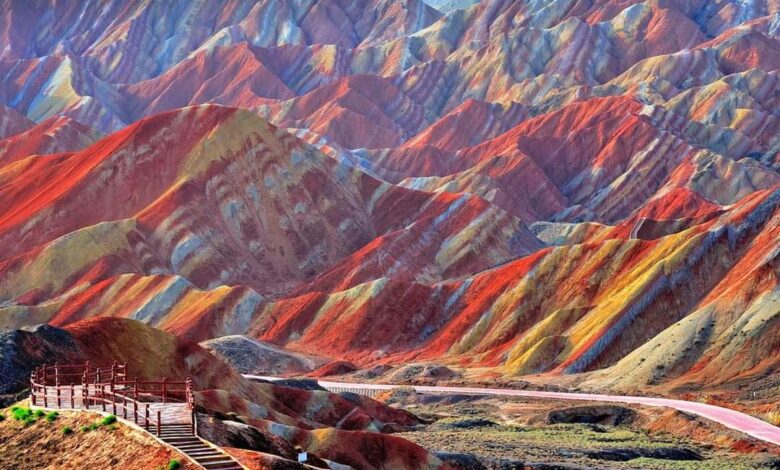
By D N Singh
The sight of these coloured mountain peaks, known as Rainbow Mountains, as if painted by someone by brush, surely create an illusion. But they are real and draw thousands of visitors the year round.
Part of the Zhangye Danxia Landform Geological Park in the Gansu province, the coloured peaks are in different colours and shades as if done with a meticulous artistry and rhythm.
Like cerulean blue, vibrant magenta, canary-yellow, and blood-orange the rainbow mountains may seem like a whimsical setting but hard to believe that they are a reality of the nature.
The rainbow striations are the result of centuries of tectonic shifts, climatic beds, say experts in the field.
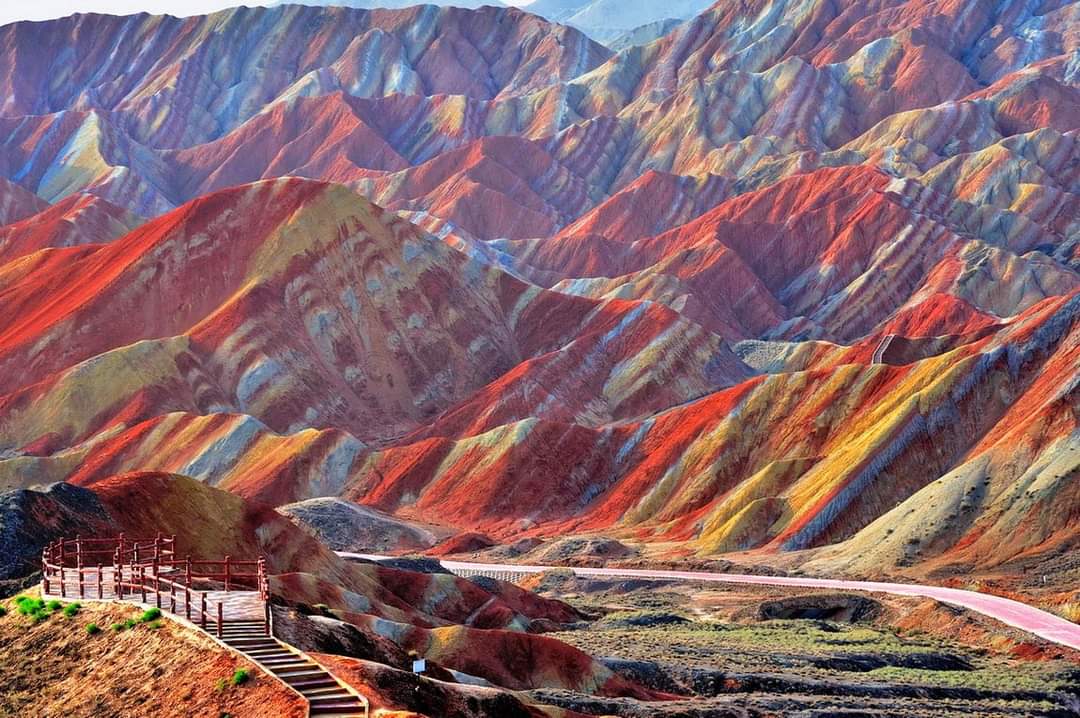
How Did The Rainbow Mountains Form?
The Rainbow Mountains are cretaceous sandstones and siltstones that were deposited in China before the Himalayan Mountains were formed. The sand and silt was deposited with iron and trace minerals that provided it with the key ingredient to form the colors we see today.
What was once a layered horizontal and flat stratigraphy was disrupted by the Indian Plate colliding into the Eurasian Plate approximately 55 million years ago. Much like when two cars get in a wreck and the bumpers fold and break, a similar process folded what was once flat sandstones into the Rainbow Mountains we see today. This process uplifted mountains and exposed sedimentary rocks that were otherwise hidden well below the surface of the earth. Weathering and erosion removed the overlying layers of continental siliciclastic rocks and exposed underlying formations with different mineralogy and chemistry. This causes the striking variation in colors seen across the Rainbow Mountains.
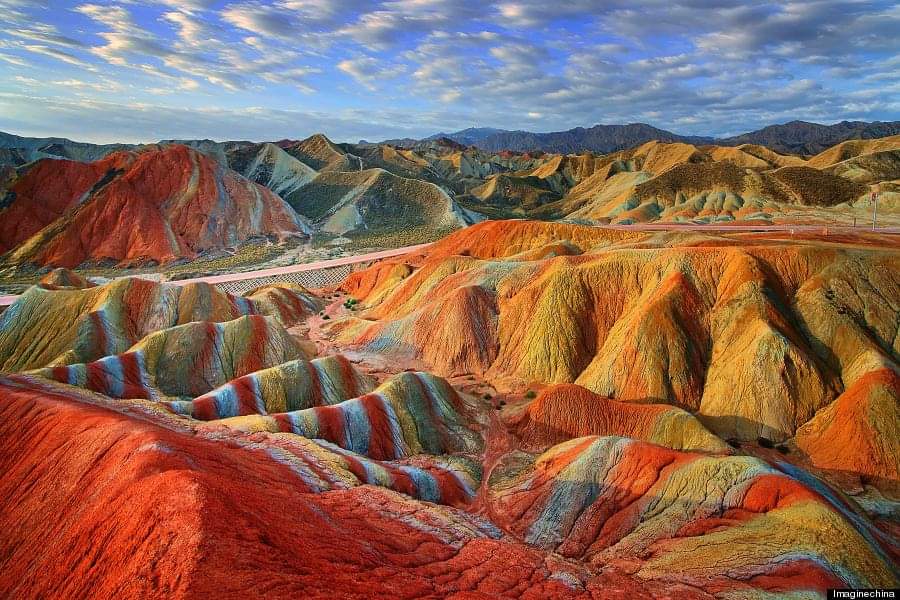
So now that you have an idea of how the Rainbow Mountains formed, we will discuss a bit about how they got the color we see today. Precipitated groundwater moves through the sandstone grains and deposits trace minerals in between the grains. This precipitate can build up to a point where there is no longer an pore space between the individual grains, cementing them in place. This process is what imparts the trace minerals mentioned below and allows for the otherworldly coloring of sandstones around the world.
The primary color is a deep red sandstone, not unlike the Fountain Formation that outcrops in the Flatirons, Red Rocks Park, and the Garden of the Gods all in Colorado. The red coloring is due to an iron oxide coating and cementation, also known as hematite (Fe2O3), between the sandstone grains. This is the exact same process that takes place when a piece of metal is left out in the rain and forms a red layer of rust around the outside.
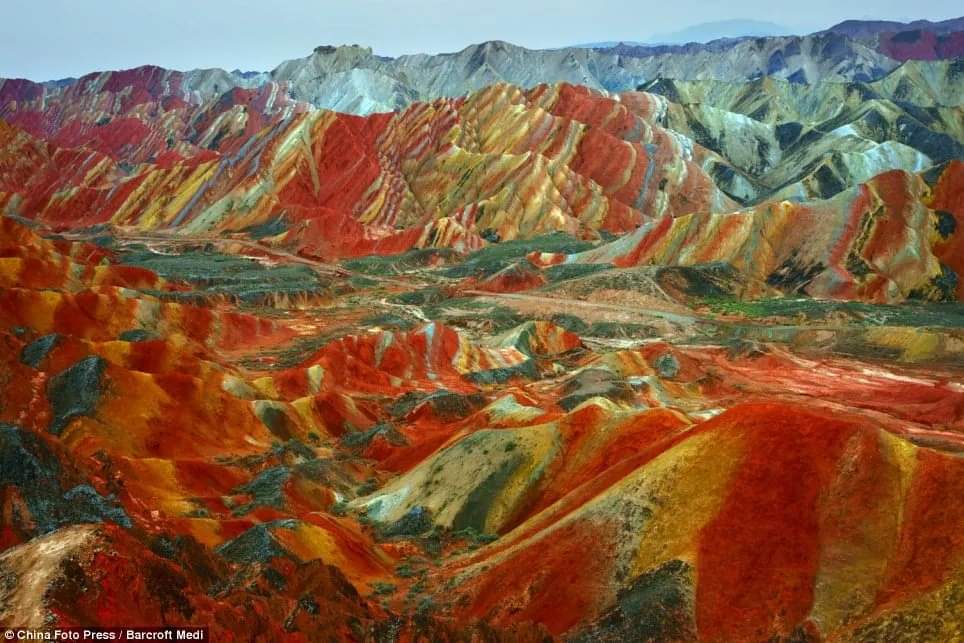
Weathering, mixed with water and oxygen oxidizes elemental iron into iron oxide, which is notable for its dark red coloring. The Rainbow Mountains are largely characterized by this iron oxide staining of its sandstone Danxia formation.
Most of the time iron oxides impart a dark red pigment, however, there are instances where oxides form different colors. For example oxidized limonite or goethite will produce brown or yellow staining of sandstones, magnetite can form black staining of sandstones. If there is iron sulfide present, you will get a metallic yellow color imparted by the sulfur. Meanwhile, green coloring is often due to chlorite or iron silicate clays. These are just some examples of how sandstones can be altered in coloring during diagenesis.
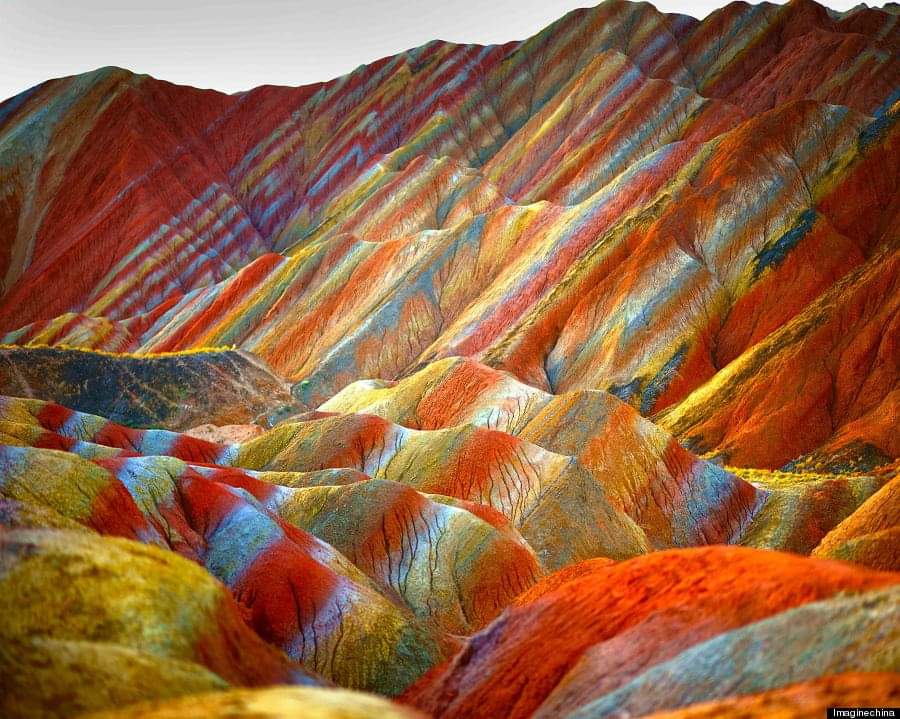
Luckily for you, you don’t have to travel to northwest China to see this exact same process. Go outside and wander around, looking down and out on the landscape. Try to identify a rock with a red coloring all over and there’s a good chance you’ve identified a iron oxide stained sandstone. Let us know what you’ve found in the comments below.
Lastly, I’ll leave you with a few more spectacular photos of the Zhangye Danxia Rainbow Mountains.
With inputs from sources






